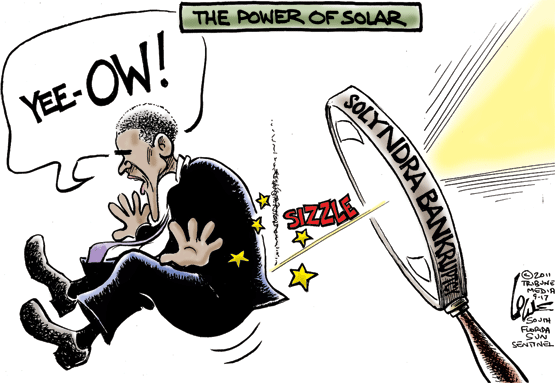By Lou CoveyEditorial Director, Footwasher Media
The collapse of Solyndra has been the subject of both major news coverage and a foundational bit of political discourse recently. A closer look at the facts reveals that the reality of Solyndra and the solar industry is far from the speculation, especially when viewed from a military perspective.
In the wider scope, industry analysts and observers wonder what all the kerfuffle is about because everyone who knew the industry knew that Solyndra was not going to make it, especially in the current market.
"Solyndra's CIGS solar panels were expensive," according the Chirag Rathi of Frost and Sullivan. "The technology was innovative when it started out 6 years ago, but the global market place changed so fast in this time period that it became incredibly difficult for them to compete on price. Their per watt production cost was widely believed to be above the $6 mark, much higher than the poly-crystalline technology of $1.75 per watt and falling."
According to the industry rule of thumb, for alternative energy to be competitive with fossil fuels, the cost per watt needs to fall below $1.
Rathi pointed out that the solar panel industry is in oversupply with the massive capacity coming out of China and Taiwan. "The Chinese government has provided more than $30 billion in soft loans to the domestic panel manufacturers."
With all this common knowledge, the persistent question has been: Why did the Obama administration push forward with the loan program? The first answer is, well, that's been the way things have been done for some time.
Contrary to conventional thought, alternative energy gets the lion's share -- by far -- of any government investment in energy, including fossil fuels. According to the Institute for Energy Research, direct federal subsidy (that's cash, not tax incentives) for renewable energy topped $14 Billion in 2010, while total subsidy of fossil fuel (gas, oil and coal) was just under $3.4 Billion... and 90 percent of the latter was in tax incentives, not actual cash payments. And since the Solyndra investment was only in the form of loan guarantees, it won't come out of the federal budget until the bankruptcy is complete. In other words, the fall of Solyndra has not yet cost the government anything.
So what, specifically, did the government get out of the Solyndra deal? That's where no one is looking, and where you need to look to find the more interesting story.
Find out why the generals are smiling at Element14.com

